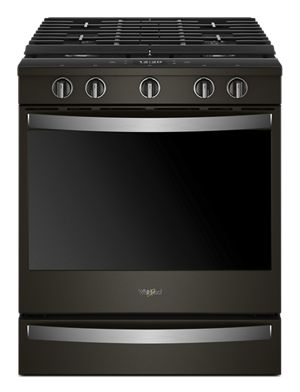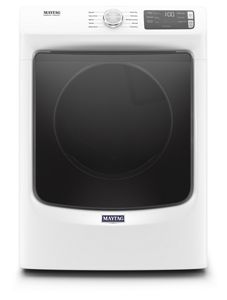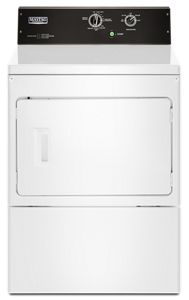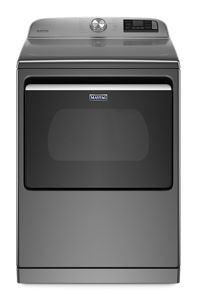
Range Hoods vs. Microwave Hoods: What to Consider
A “standard” range hood is designed specifically for venting while a microwave hood cooks food and also vents. Either one will offer venting performance sufficient for most at-home cooking techniques. Both can vent kitchen air outside or through recirculation, depending on the model and your home’s ductwork.
Ventilation is an important part of keeping your kitchen fresh for each new day of making. Whether you choose a standard range hood vs. a microwave hood will depend on the type of cooking surface below it as well as the kind of cooking you do most often. Read on to find the ideal option for you and breathe new life into your kitchen.


What are my kitchen ventilation options?
Kitchen vent hoods come in distinct types, one of which is the microwave hood combination. Before you choose between a microwave hood and another type of hood, get familiar with all the possibilities. Read our breakdown below or explore the full KitchenAid article on different types of kitchen hoods and ducted vs. ductless hoods.
Canopy hoods come in wall-mount models or kitchen island models. They offer powerful venting and advanced features.
Under-cabinet hoods fit beneath the cabinets over your range. They’re small and discrete but also feature a variety of venting strengths.
Microwave hood combinations can cook food while venting smoke, odor and grease coming off the cooking surface below.
Retractable downdraft hoods are installed into countertops. They remain flush with the countertop until needed, then rise high above the cooking surface when turned on.


5 Benefits of Standard Kitchen Range HoodS
For the purposes of this article, we’ll call any hood that isn’t a microwave a “standard” range hood. A standard kitchen hood would be a canopy, under-cabinet or retractable downdraft hood. When comparing a standard over-the-range hood vs. a microwave hood, consider these benefits.
1. More venting strength available
A range hood with strong venting capabilities helps clear the air while you create with messy techniques like frying, searing and sauteing. Standard range hoods tend to offer higher CFM Motor Class* ratings than microwaves, which means they can often suck up more air per minute (cubic feet per minute). While some microwave hood combinations feature CFM ratings that are comparable to standard hoods, the highest CFMs available will typically be in a standard range hood, particularly a canopy, retractable or commercial-style hood.
Standard range hood: Typically 200 to 600 CFM Motor Class available. Some commercial-style models reach up to around 1200 CFM Motor Class.
Microwave hood combination: Typically 200 to 500 CFM Motor Class available.
*Performance varies based on installation. Resources available at AHAM.org.
2. External Venting Widely Available
Many canopy and retractable downdraft hoods are ducted, which means they vent kitchen air out of the house through ductwork in the wall, ceiling or floor. Microwave hood combinations and under-cabinet hoods, on the other hand, typically come factory set to recirculate air, meaning they filter the air then push it back out into the kitchen.
3. High heat tolerance
If you have a commercial-style gas range, you may have a burner that puts out high BTUs. BTUs (British Thermal Units) measure the amount of heat a gas burner can produce. High-BTUS burners demand a vent hood that can handle that heat and clear the byproducts of combustion the range is capable of producing. Higher BTU burners also usually require a bit more clearance between the cooking surface and the vent hood.
Most standard gas ranges can be paired with a microwave hood, but if you have a commercial-style range with high BTU burners, you’ll likely want a standard range hood. Standard hoods usually have stronger heat tolerance than microwave hood combinations, and are often installed higher above the range as well. Canopy hoods and retractable downdraft hoods will often have the highest BTU ratings. Keep in mind that range hood installation requirements vary by design and may require different clearances. Check the installation instructions to ensure you choose the right hood for your space.
4. Style and Aesthetics
Some people use their range hoods to enhance the look and feel of their kitchen. Many canopy hoods feature modern, clean lines and shiny stainless steel that can add to the style of a contemporary kitchen. Some canopy hoods are more curvilinear, so may work better in a traditional-style kitchen. Under-cabinet hoods and retractable downdraft hoods are often hardly noticeable if you prefer a streamlined, minimal look.
5. Advanced Venting Features Available
You may find some features on standard range hoods that you won’t see on a microwave hood combination. For example, select KitchenAid® canopy and under-cabinet hoods offer Perimetric Ventilation which pulls air from the edges of the hood, speeding up the movement of air at the intake. Higher-end canopy hoods can come with automatic features that can sense what type of venting you need like Automatic Turn On and the Automatic Speed Setting by KitchenAid.
Shop KitchenAid® Standard Kitchen Range Hoods


5 Benefits of Microwave Hood Combinations
While there are plenty of benefits to standard range hoods, microwave hood combinations offer the additional functionality of cooking food. Plus, these microwaves may surprise you when it comes to venting strength and other features. Read on to learn more about the benefits of over-the-range microwave venting options or browse KitchenAid® microwave hood combinations to learn more.
1. Space Saving
These two-in-one appliances save space by getting your microwave off the countertop while letting you retain some cabinet space above the microwave. If you’re working with limited space above the range, consider the KitchenAid® Low Profile Microwave Hood Combination which gives cooks more room to create above the cooking surface. Learn more about microwave sizes.
2. DUAL-PURPOSE FUNCTIONALITY
Over-the-range microwaves vent kitchen air while delivering major cooking capabilities. Some offer enhanced heated air flow that helps achieve exceptional results. For example, select KitchenAid® microwave hood combinations feature Convection Cooking that allows baking at temperatures up to 425° F, and Sensor Steam which precisely steams food based on type and selected doneness.
3. SIMPLE installation
Many microwave hood combinations come factory set to vent via air recirculation, meaning they filter the air then push it back out into the kitchen. Other types of hoods that vent externally require ductwork in the wall, ceiling or floor. If you don’t have ductwork already, you’ll need a professional to install it. Microwave hood combinations, on the other hand, are fairly simple to install yourself.
4. Streamlines Your Kitchen Design
Microwave hood combinations are a single appliance solution. They eliminate the need for two separate appliance purchases, installations and dedicated spaces. A pared down set of appliances can help streamline your kitchen layout, open it up and make space for other design elements.
5. adequate Venting Strength Available
Microwave hoods may not come with the type of ventilation and heat tolerance needed for a serious, commercial-style range, but they can still offer powerful venting for creative home cooks. For example, select KitchenAid® over-the-range microwaves deliver 500 CFM Motor Class* venting strength.
*Performance varies based on installation. Resources available at AHAM.org.
Shop KitchenAid® Over the Range Microwaves


Do Over-the-Range Microwaves Have Exhaust Fans?
Some over-the-range microwaves have exhaust fans that vent kitchen air out of the house through ductwork in the wall. Some don’t and instead filter, then push it back out into the kitchen. Many will come with the ability to do either, so you must choose which one and set it up before installing.
DO OVER-THE-RANGE MICROWAVES VENT OUTSIDE OR RECIRCULATE AIR?
Some over-the-range microwaves vent outside, some recirculate air and many can do both. Before purchasing a new microwave, check the product specifications, user manual or installation instructions to determine what type of ventilation capabilities it has. Microwaves that do both may require you to make some adjustments before installing.
Ducted or vented microwaves feature exhaust fans that vent air outside of the house.
Recirculating, non-ducted or updraft microwaves filter air then push it back into the kitchen.
Convertible microwaves give you the option to select your ventilation type.


Are Over-the-Range Microwaves Dated or Out of Style?
No. Over-the-range microwaves are a very popular choice for many contemporary kitchens. They’re a space-saving, practical and streamlined appliance that offers excellent cooking and venting performance. If you’re looking for another option, built-in microwaves are also very popular. You often see them in large, high-end kitchens along with a standalone range hood to take care of the venting. Browse KitchenAid® built-in microwaves to learn more.


Do I Always Need a Range Hood or Microwave Hood?
Not necessarily. Check your state and local building codes for minimum home requirements. Plus, check your range, cooktop and desired hood’s use and care guide for the manufacturer's recommendations on optimal appliance operation and efficiency. Even if a hood is not required, ventilation can be key for clearing the air as well as keeping the area around the range or cooktop clean. It also helps remove odors from the kitchen and sets the tone for every new journey of creating.
NEED MORE HELP DECIDING?
-
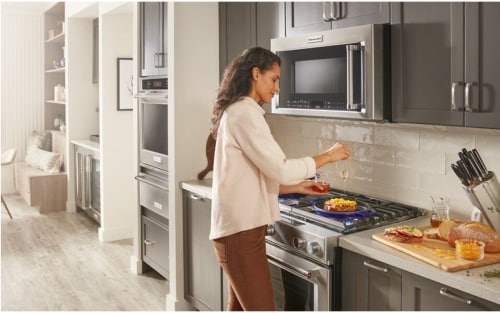 5 Types of Microwaves to Consider for Your Kitchen Finding the right type of microwave can unlock new culinary possibilities and even provide secondary oven space. Explore this guide to compare microwave types and styles.
5 Types of Microwaves to Consider for Your Kitchen Finding the right type of microwave can unlock new culinary possibilities and even provide secondary oven space. Explore this guide to compare microwave types and styles. -
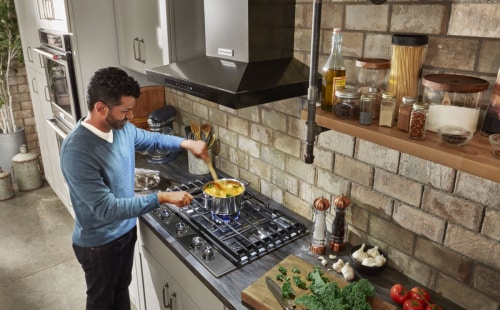 5 Types of Range Hoods for Any Kitchen What’s the best range hood for your kitchen? Explore different types of kitchen hoods and learn what to consider before choosing a range hood for your home.
5 Types of Range Hoods for Any Kitchen What’s the best range hood for your kitchen? Explore different types of kitchen hoods and learn what to consider before choosing a range hood for your home. -
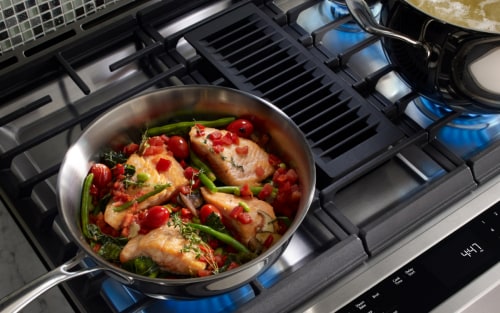 What Is a Downdraft Range or Cooktop? A downdraft range can help keep your kitchen smelling fresh while you cook. Learn what a downdraft range or cooktop is and how to use one with this guide from KitchenAid brand.
What Is a Downdraft Range or Cooktop? A downdraft range can help keep your kitchen smelling fresh while you cook. Learn what a downdraft range or cooktop is and how to use one with this guide from KitchenAid brand.
